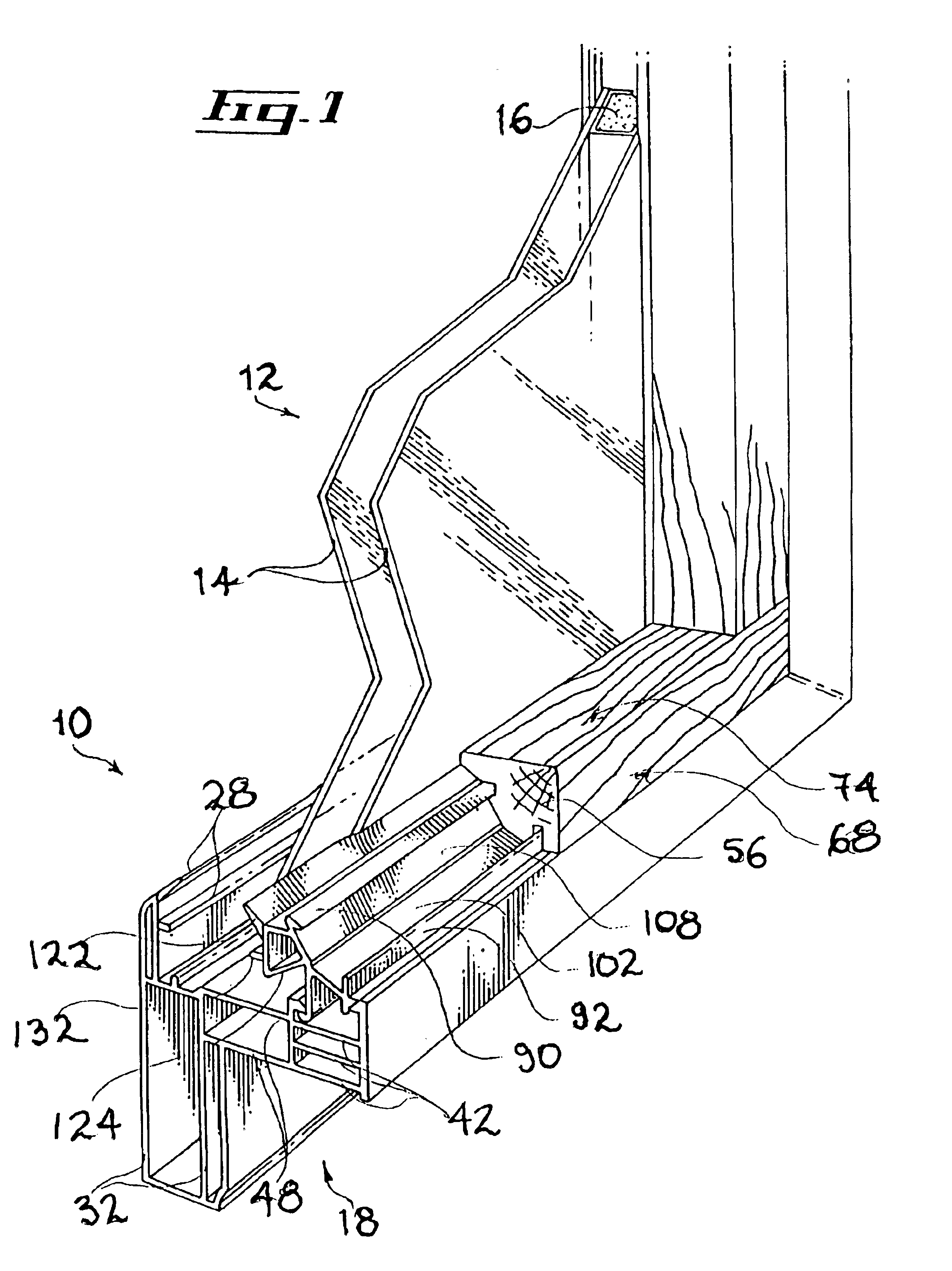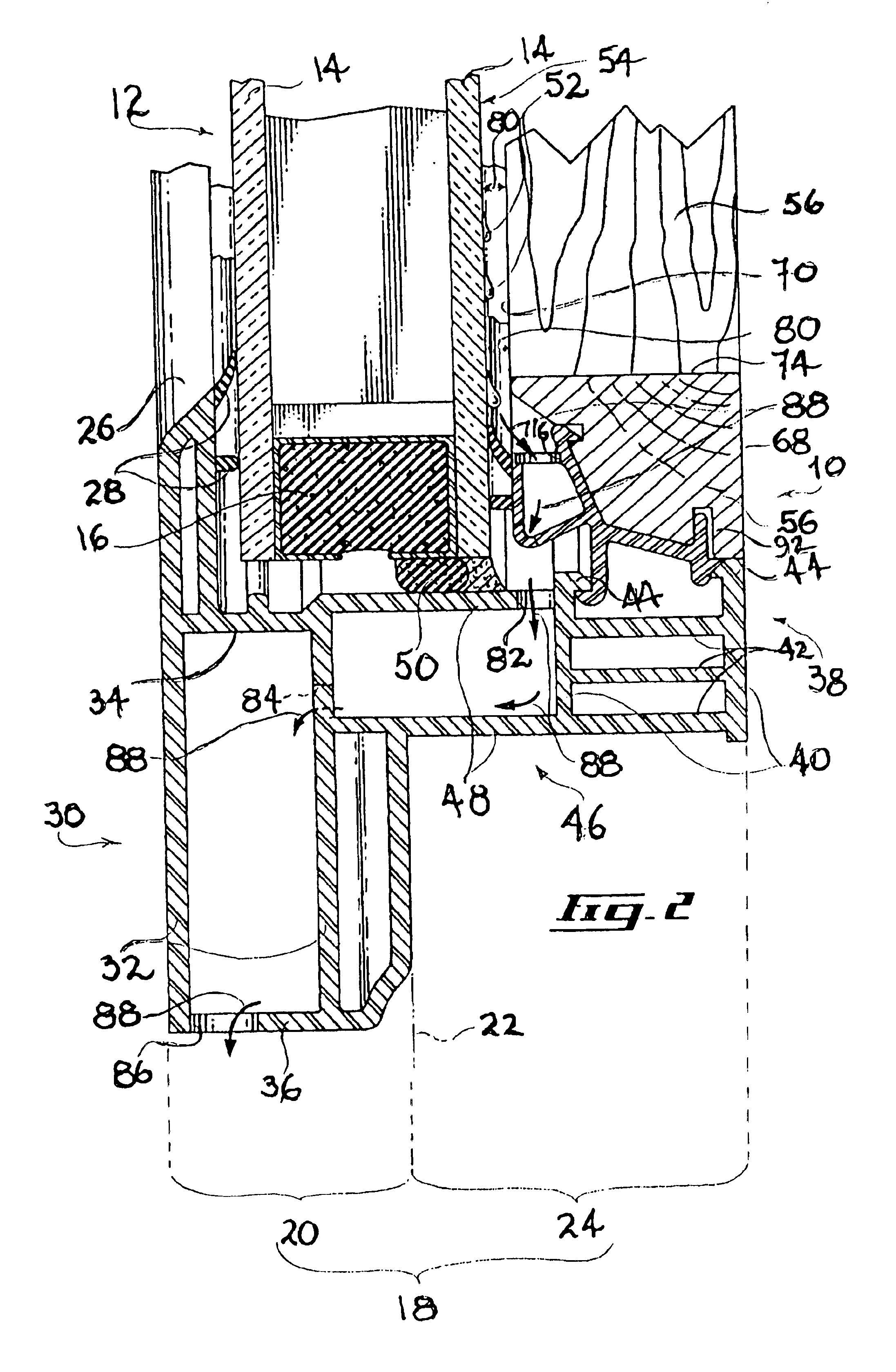Condensation evacuating window sill
a technology of condensation and window sills, applied in the direction of glass pane fixing, building components, construction, etc., can solve the problems of imprégnation of wood, allergies and other health hazards, and achieve the effects of preventing deterioration, improving the overall aesthetic appearance of the window, and being easily manufactured
- Summary
- Abstract
- Description
- Claims
- Application Information
AI Technical Summary
Benefits of technology
Problems solved by technology
Method used
Image
Examples
Embodiment Construction
Referring to FIG. 1, there is shown a condensation evacuating window sill 10 in accordance with an embodiment of the present invention. The window sill 10 is shown mounted adjacent a conventional double pane-type window 12 including a pair of glass panes 14 maintained in a substantially parallel and spaced relationship relative to each other by a conventional pane peripheral insulating and spacing component 16.
Both the window sill 10 and the window 12 are shown mounted to a conventional window frame 18. It should, however, be understood that the window sill 10 could be used in other contexts such: as with other types of windows and / or other types of window frames without departing from the scope of the present invention.
As shown more specifically in FIG. 2, the window frame 18 typically includes a frame exterior portion 20 adapted to be positioned outside relative to a reference line 22 schematically representing the exterior surface of a building wall (not shown). The window frame ...
PUM
| Property | Measurement | Unit |
|---|---|---|
| molding | aaaaa | aaaaa |
| relative displacement | aaaaa | aaaaa |
| surface temperature | aaaaa | aaaaa |
Abstract
Description
Claims
Application Information
 Login to View More
Login to View More - R&D
- Intellectual Property
- Life Sciences
- Materials
- Tech Scout
- Unparalleled Data Quality
- Higher Quality Content
- 60% Fewer Hallucinations
Browse by: Latest US Patents, China's latest patents, Technical Efficacy Thesaurus, Application Domain, Technology Topic, Popular Technical Reports.
© 2025 PatSnap. All rights reserved.Legal|Privacy policy|Modern Slavery Act Transparency Statement|Sitemap|About US| Contact US: help@patsnap.com



